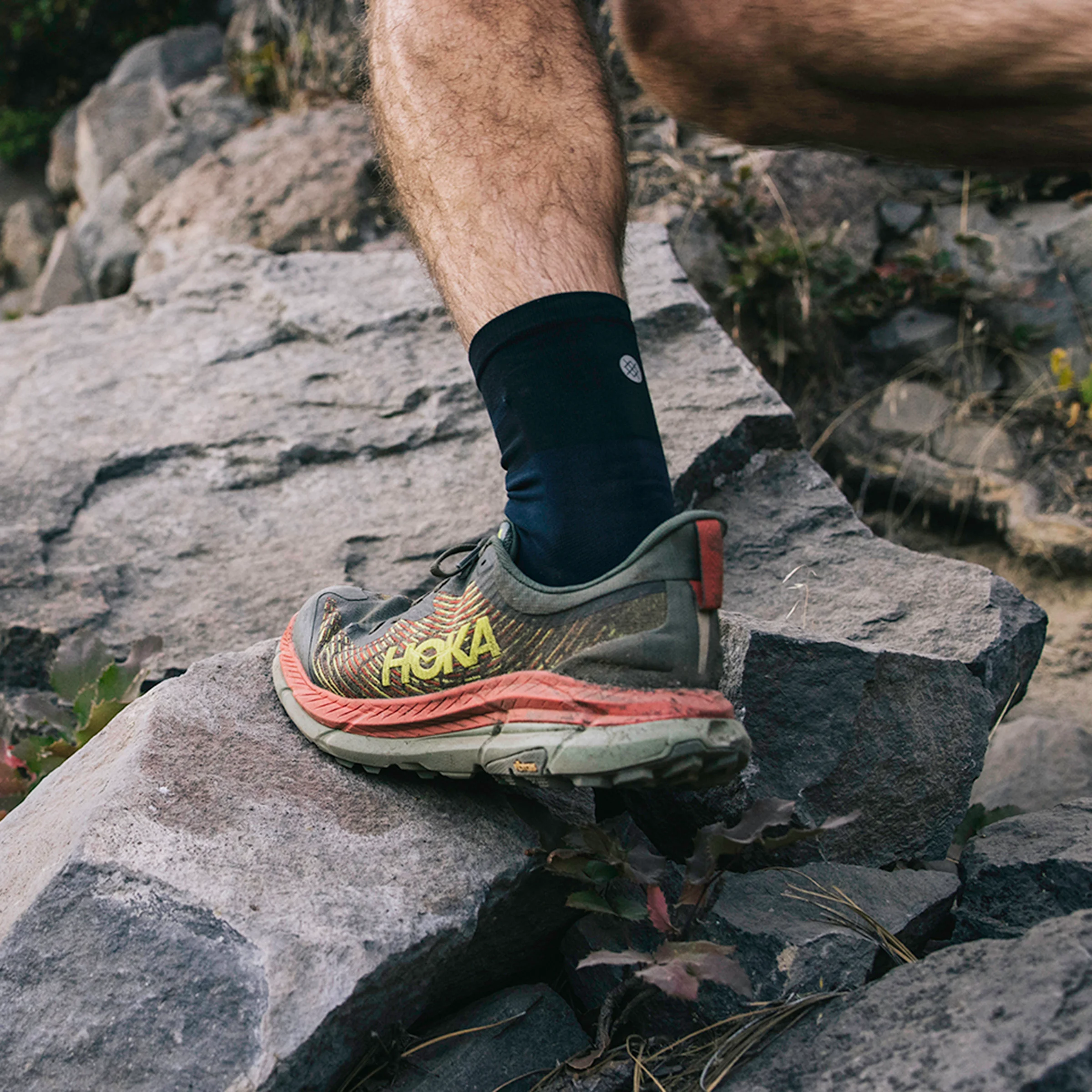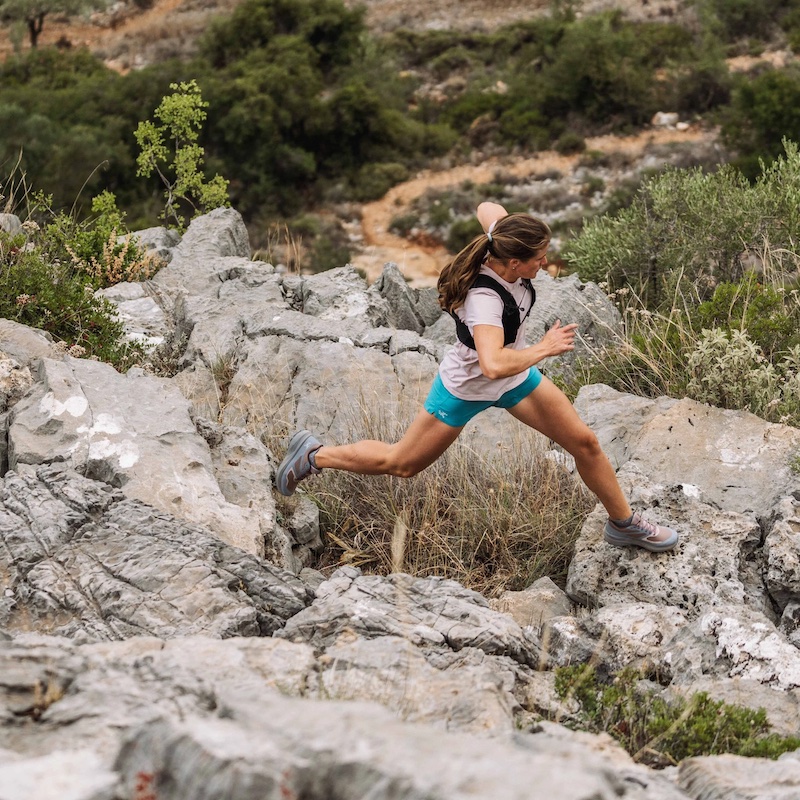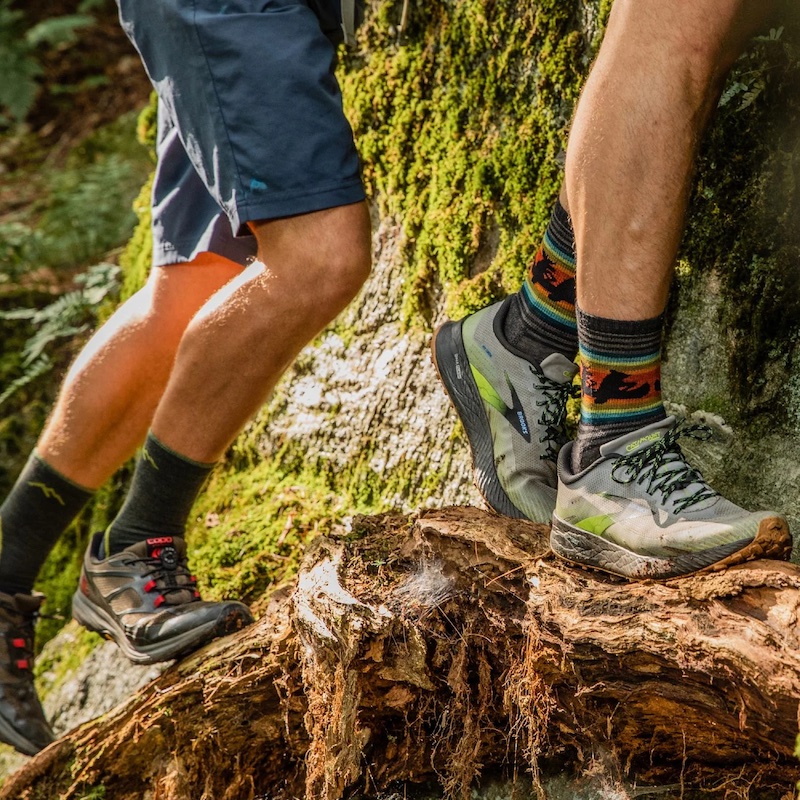Introduction to Hiking Shoes and Trail Running Shoes
For outdoor activities, the right footwear is essential. When you think about hitting the trails, whether for a brisk hike or a high-speed trail run, understanding the difference between hiking shoes and trail running shoes can greatly impact your experience. Can you run in hiking shoes? Here’s a simple breakdown to get you started.
What are Hiking Shoes?
Hiking shoes are robust and designed for rugged trails. They offer stability and protect your feet from harsh terrain. With features like thicker soles and enhanced grip, hiking shoes are ideal for those who prioritize foot protection and support over speed.
What are Trail Running Shoes?
Trail running shoes, on the other hand, are lighter and more flexible. They are built for speed and comfort over softer or less rocky paths. These shoes typically have better breathability and quicker drying capabilities, making them perfect for runners who cover high miles and need to maintain a fast pace.
Understanding these distinctions will help you choose the right shoe for your next adventure, ensuring both comfort and durability, depending on the trail’s demands.
Key Considerations When Choosing Footwear for Runners and Hikers
When selecting footwear for running or hiking, several factors are crucial to consider. These factors enhance comfort, optimize performance, and ensure safety during your outdoor adventures.
Fit and Comfort
Proper fit is essential for any type of footwear but is especially crucial in activity-specific shoes like those for running and hiking. Shoes that don’t fit well can lead to blisters, discomfort, and even injuries. Always ensure there’s enough room in the toe box, and the heel fits snugly without slipping.
Sole and Traction
The sole of the shoe plays a big role in your safety and comfort. For hiking, look for thicker soles with deep lugs for better grip on rough terrains. Trail running shoes usually feature lighter, more flexible soles that offer quick movement and moderate grip for less technical trails.
Weight
The weight of your shoes can impact your performance. Lighter shoes are better for long hikes and trail runs as they cause less fatigue. However, heavier hiking shoes might offer more durability and protection on rugged trails.
Material and Durability
Material quality affects the shoe’s lifespan and performance. Hiking shoes often use tougher materials like leather or advanced synthetics that offer more protection and last longer. Trail running shoes prioritize breathable, lightweight materials to keep your feet cool and minimize weight.
Weather Suitability
Consider the typical weather conditions you’ll face. Waterproof shoes are ideal for wet conditions, but they can be less breathable. Meanwhile, mesh materials are great for hot weather, but they may not protect well against moisture.
Flexibility and Support
While trail running shoes often provide more flexibility for quick movements, hiking shoes offer more support for stability on uneven surfaces. Determine your primary need: speed and flexibility for running, or support and protection for hiking.
Each of these factors plays into the overall effectiveness of your footwear, whether you’re hitting a rugged trail or sprinting on a forest pathway. Always align your shoe choice with your specific outdoor activities to enjoy both safety and comfort.
The Pros and Cons of Trail Running Shoes for Hiking
Trail running shoes offer unique benefits and drawbacks for hiking. Understanding these can help you decide if they’re right for you.
Pros of Using Trail Running Shoes for Hiking
- Lightweight: They are lighter than hiking shoes, causing less fatigue during long treks.
- Flexibility: Their flexible soles allow for quick movements and adaptation to varying terrains.
- Breathability: With mesh uppers, they keep feet cool and dry in warm conditions.
- Comfort: Designed for running, they often provide more cushioning for long-distance comfort.
- Drying Speed: They dry faster than hiking shoes, reducing the risk of blisters.
Cons of Using Trail Running Shoes for Hiking
- Less Protection: They may not offer enough foot protection for rough, rocky trails.
- Lower Durability: The lighter materials may wear out faster than heavy-duty hiking shoes.
- Reduced Traction: While good, their grip may not match that of hiking shoes on tough terrain.
- Less Support: Minimal support can lead to ankle fatigue or injury on uneven ground.
- Weather Limitations: Many are not waterproof, posing a challenge in wet conditions.
Ultimately, whether trail running shoes are suitable for hiking depends on the trail, the weather, and personal preference. Considering these pros and cons can guide hikers and runners in their footwear choices for a safe and enjoyable outdoor experience.
The Benefits of Hiking Shoes for Running Enthusiasts
For people who love running, hiking shoes bring notable advantages. Here are some reasons runners might choose hiking shoes for their outdoor activities.
Durability and Protection
Hiking shoes boast tough materials. They shield feet from sharp rocks and rough paths. This durability means they can withstand harsh conditions longer than typical running shoes.
Enhanced Traction
Running in rugged areas demands good grip. Hiking shoes have deep lugs for this purpose. They provide a firm hold on slippery or uneven surfaces.
Support and Stability
Hiking shoes offer solid support. They are a good choice for trails with uneven terrain. With strong support, runners can avoid ankle twists and injuries.
Suitable for Varied Conditions
These shoes work well in different weathers. They keep feet dry in wet conditions and warm in cold weather. Thus, they are versatile for year-round outdoor activities.
Better Load Carrying Capacity
For runners who carry backpacks, hiking shoes offer a stable base. They help in balancing the extra weight comfortably.
Overall, hiking shoes can be a wise pick for runners who value protection and stability on the trails. They might be heavier but their benefits outweigh the weight concern for many hiking enthusiasts.
Features That Make a Shoe Ideal for Both Hiking and Running
When it comes to shoes that fit both hiking and running activities, look for these features:
Versatile Traction
Choose shoes with lugs that grip well on various terrains but aren’t too bulky for running.
Durable Build
Look for shoes made from materials that resist wear and tear without adding too much weight.
Responsive Cushioning
Find shoes with enough padding to absorb shocks but also allow quick movements.
Breathable Materials
Opt for shoes that let your feet breathe, reduce moisture, and dry fast during activities.
Balanced Weight
Select shoes that are light enough for running while still offering hiking protection.
Comfortable Fit
Ensure shoes fit well around the heel and toes to prevent blisters and discomfort.
Water Resistance
Consider shoes that can handle wet conditions but remain breathable when dry.
By choosing footwear with these features, you enjoy safety and comfort for both hiking and running.
Top Picks: Best Shoes for Hiking and Running
When it comes to the best hybrid shoes for both hiking and running, there are several options that standout for their optimal balance of comfort, durability, and versatility. Drawing upon the insights from my analysis and various gear reviews, here are some options that excel on both fronts:
- Scarpa Spin Planet – Offers stability and breathability, ideal for diverse terrains.
- New Balance Fresh Foam X More Trail v3 – Known for superior cushioning, suitable for long distances.
- Altra Olympus 6 – A top pick for wide feet, combining roominess with a rugged outsole.
- Nike Pegasus Trail 5 GTX – This waterproof option provides protection without compromising on performance.
- NNormal Kjerag – Lightweight and agile, excellent for speed and responsiveness.
- Altra Lone Peak 8 – Delivers a seamless zero-drop experience, lending itself to a natural stride.
- Salomon XA Pro 3D v9 – Features a durable construction and provides great support, particularly good for rugged trails.
Each of these shoes has been tested for attributes like grip, breathability, flexibility, and durability. It’s crucial to align the shoe features with personal needs and trail conditions. For instance, the Scarpa Spin Planet might be favorable for breathability in hot weather, while the Nike Pegasus Trail 5 GTX would be more ideal in wet conditions.
Always consider factors such as the terrain’s technicality, the weather you’ll encounter, and whether you’ll be carrying a heavy pack. With these top picks that blend key qualities from both running and hiking footwear, you can tackle the trails with confidence and agility, knowing your feet are well-supported for the journey ahead.
How to Adapt Your Running Shoes for Hiking Terrain
Adapting running shoes for hiking involves several adjustments for added safety and comfort. Here’s how to make the transition smoother:
Choose the Right Running Shoes
Start with shoes designed for trails, not the road. They should have good grip and be durable. Avoid shoes meant for flat surfaces since they lack necessary traction.
Add Protection
Consider attaching toe protectors to shield against rocks and roots. They add a layer of security for your feet on rough terrains.
Increase Traction
If possible, add insoles or outsoles that provide extra grip. This helps prevent slips on loose or wet grounds.
Support Your Ankles
Choose running shoes with built-in ankle support. This prevents injuries when you traverse uneven or steep paths.
Waterproofing
Spray your shoes with a water-resistant coating if they’re not already waterproof. This keeps feet dry during wet hikes.
Break Them In
Wear your running shoes on shorter hikes to break them in. This reduces the risk of blisters and discomfort during longer treks.
Carry Light
When hiking in running shoes, pack less weight. Heavy loads may require sturdier footwear.
By following these steps, your running shoes can handle hiking terrain while providing comfort and reducing injury risks. Keep in mind these are temporary solutions. For regular hikers, investing in proper hiking shoes is advisable.
Final Thoughts: Balancing Performance and Comfort
When venturing into the outdoors, choosing the right shoes is vital. Your choice directly affects your comfort, safety, and performance. Trail running shoes provide flexibility and quickness, ideal for smooth paths. Yet, on rocky, uneven trails, hiking shoes offer better support and protection. Your adventure’s success hinges on this balance between comfort and performance. Consider the terrain and your activity level before deciding. For mixed activities, hybrid shoes that combine trail running and hiking features could be the answer. They offer versatility across various landscapes. Remember, comfort is key for an enjoyable outdoor experience, so always choose wisely to ensure both protection and pleasure on your trail adventures.





